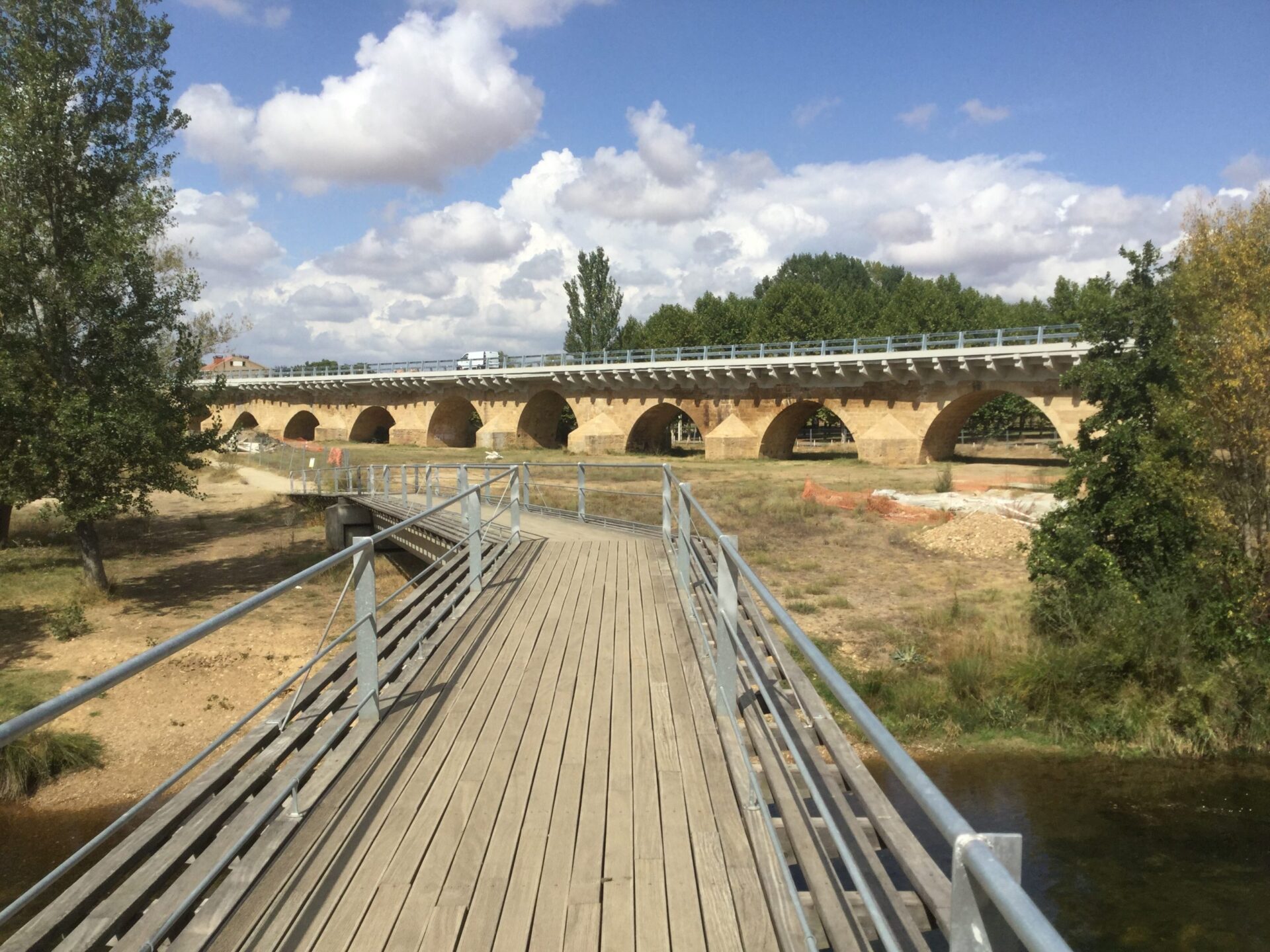The path that our feet trod today was very similar to yesterday. A stoney, white, tree lined path that ran parallel to a small road. But what was around us was quite different.
We left this morning under the gaze of a cloud covered moon. Our light came from the head lamp we carried with us. Mice scurried around us, running for cover across our path and some, ignorant of the damage our heavy feet could cause remained nonchalantly eating their meal.
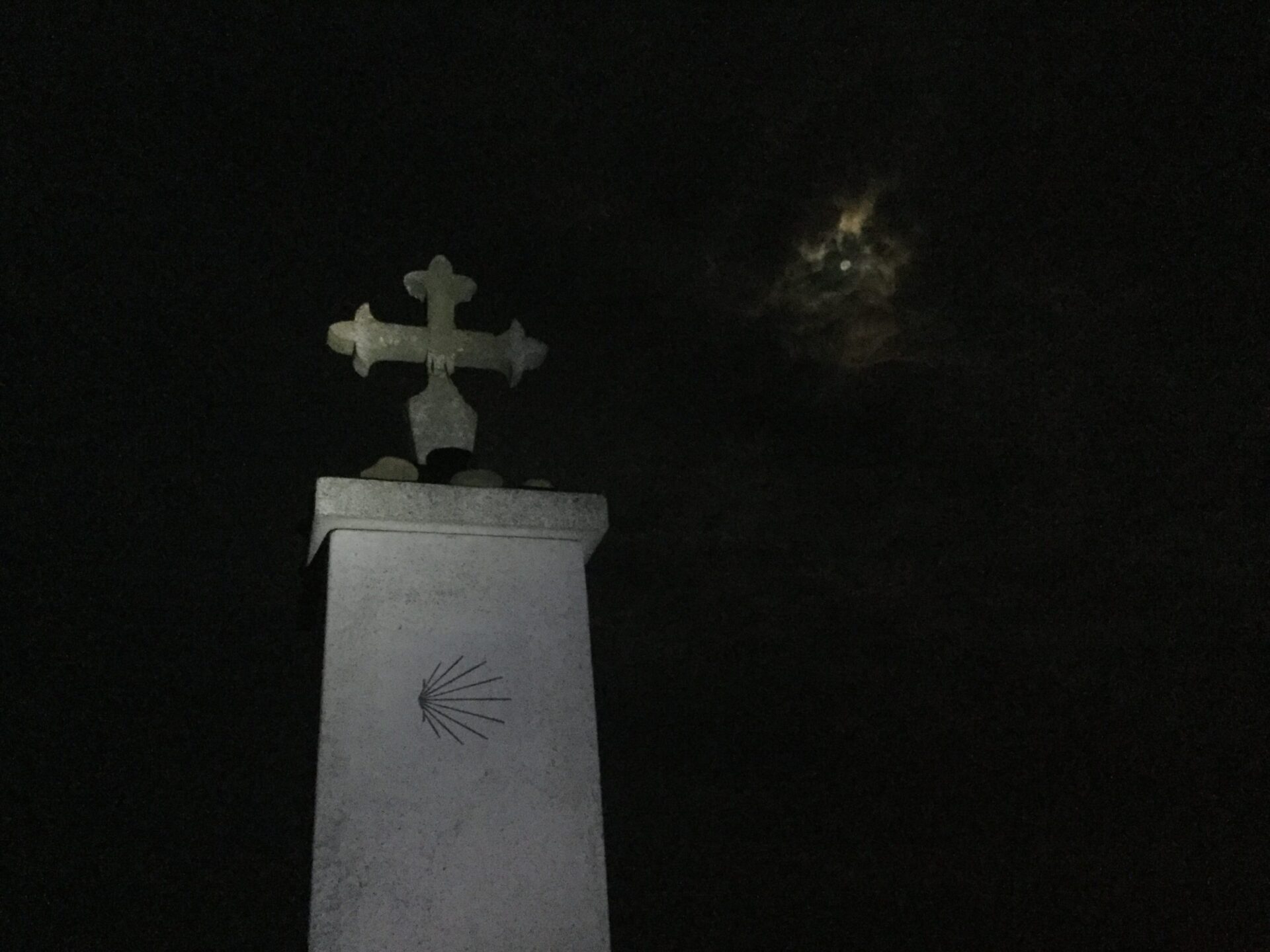
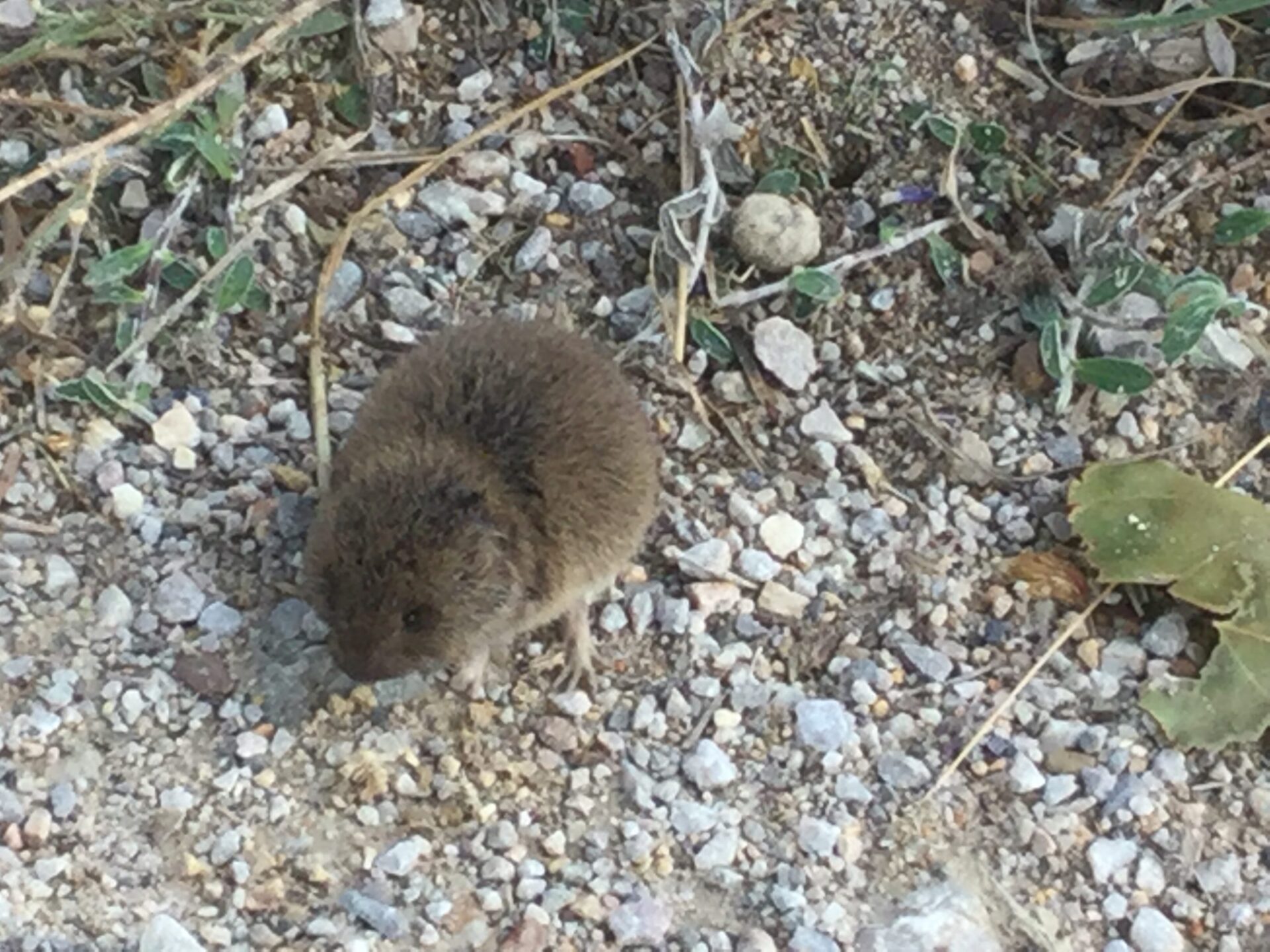
Hectares and hectares of maize under irrigation with the occasional crop of swede? After an hour and a half of walking I saw my first deer. But they’re were quick. They bounded away over the horizon.
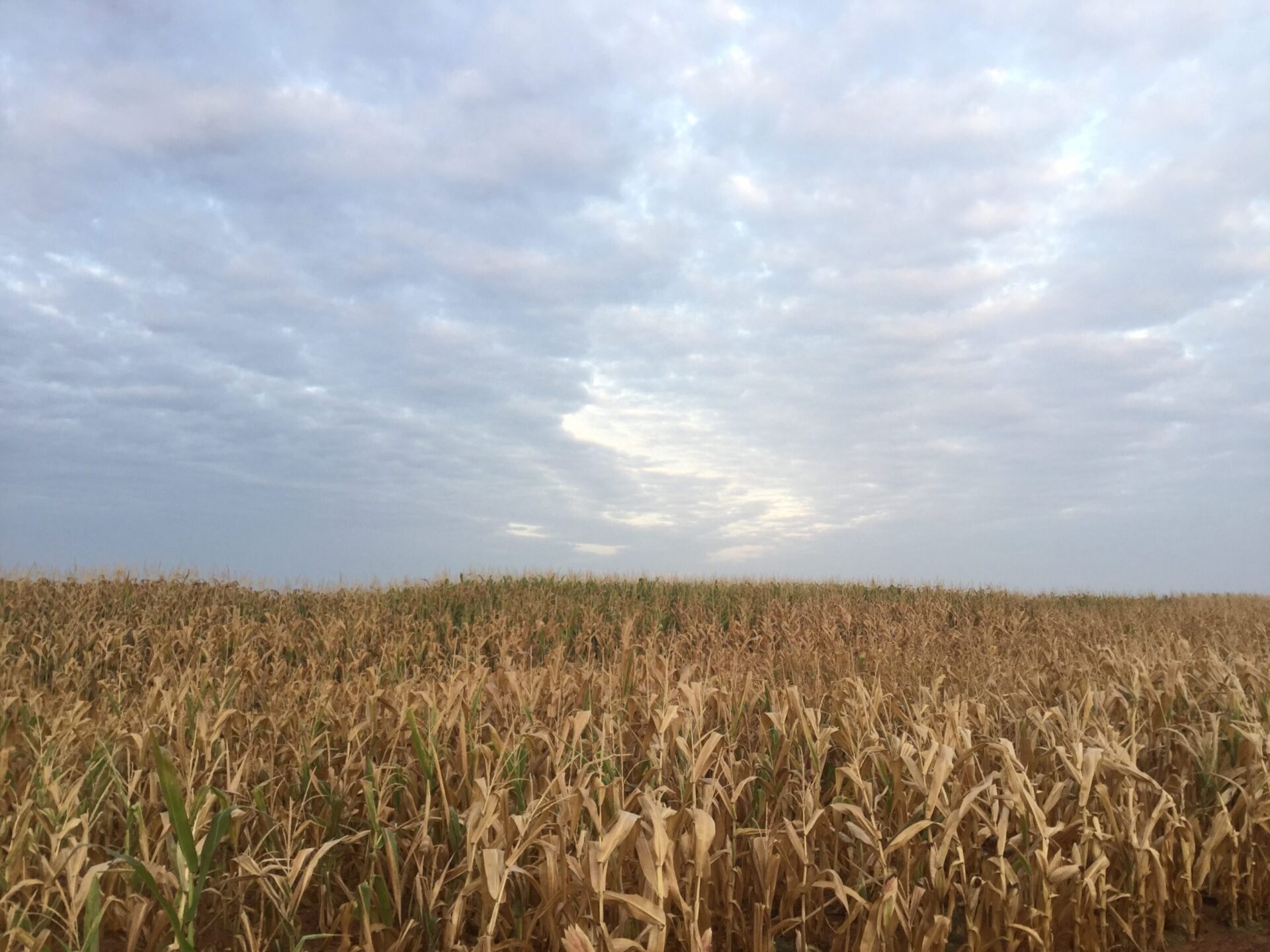
At one of the wayside stops Patched Up Dave thought he had found the Camino Excalibur. If it was, alas it wasn’t for him or for me.
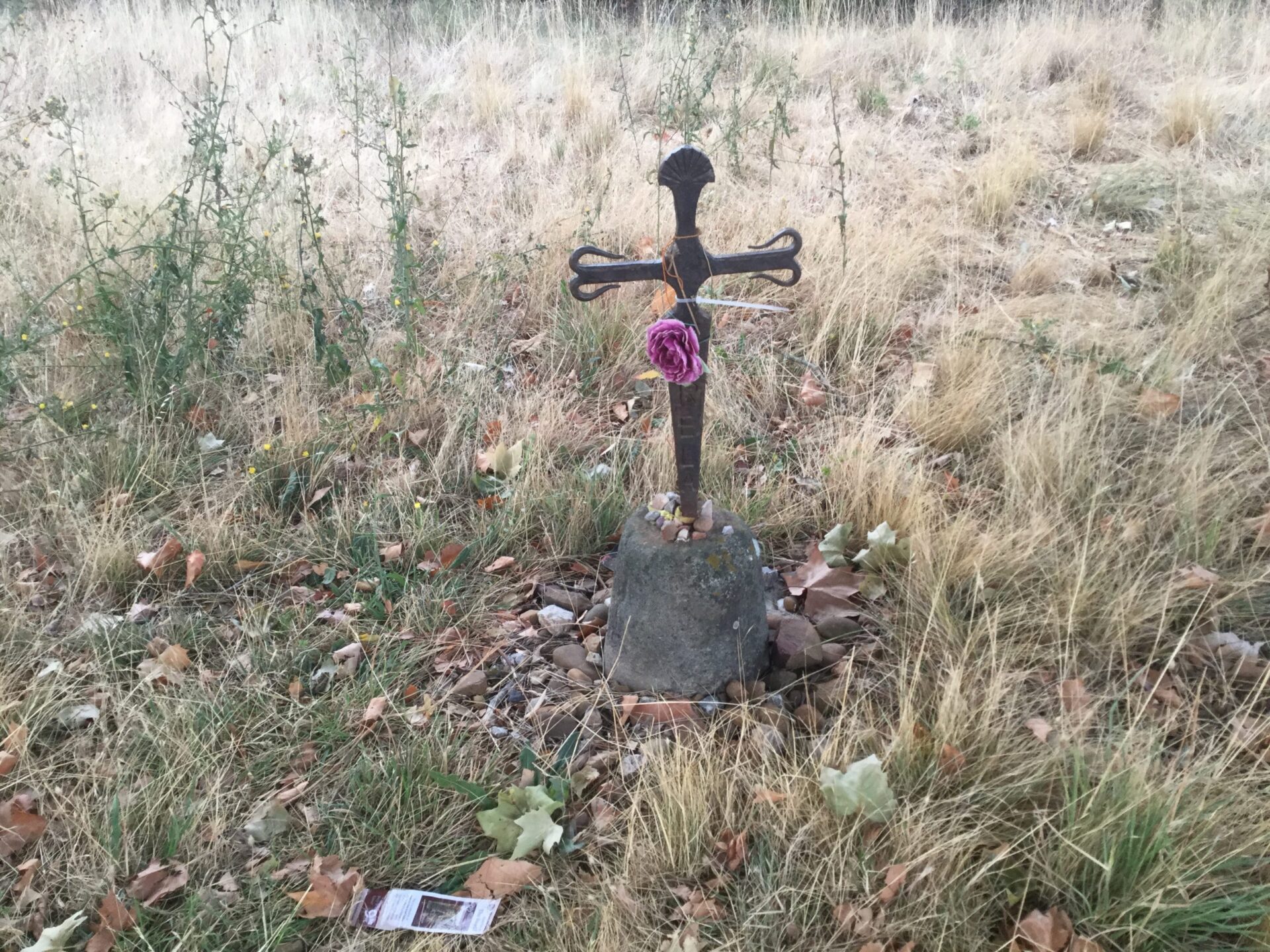
The turnoff to Villamarco was for us the half way mark on a 13 K long stretch to Reliegos. At the turnoff into Villamarco which was a further 2 K off the Camino path there was a wayside stop. The wayside stop had an incredibly beautiful sculpture garden of museum pieces that lead towards the town. The town has no pilgrim amenities but the stop was historically fascinating.
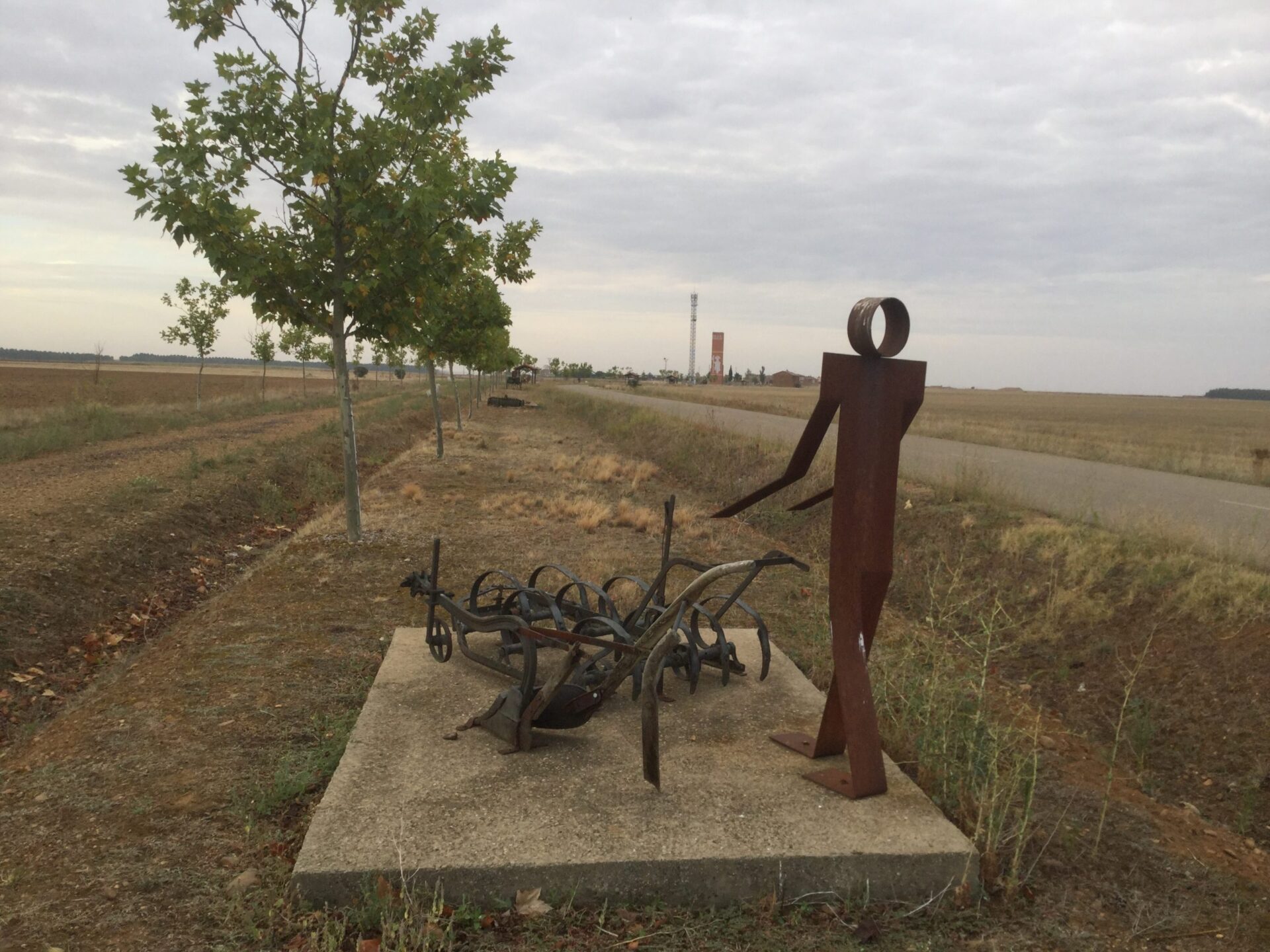
By 9 o’clock Patched Up Dave thought we were walking into a thunderstorm. The sky still hadn’t cleared but the patches of blue sky mixed with the white clouds made for a beautiful sky. After 15 kilometres we arrived in Reliegos and to more hobbit houses.
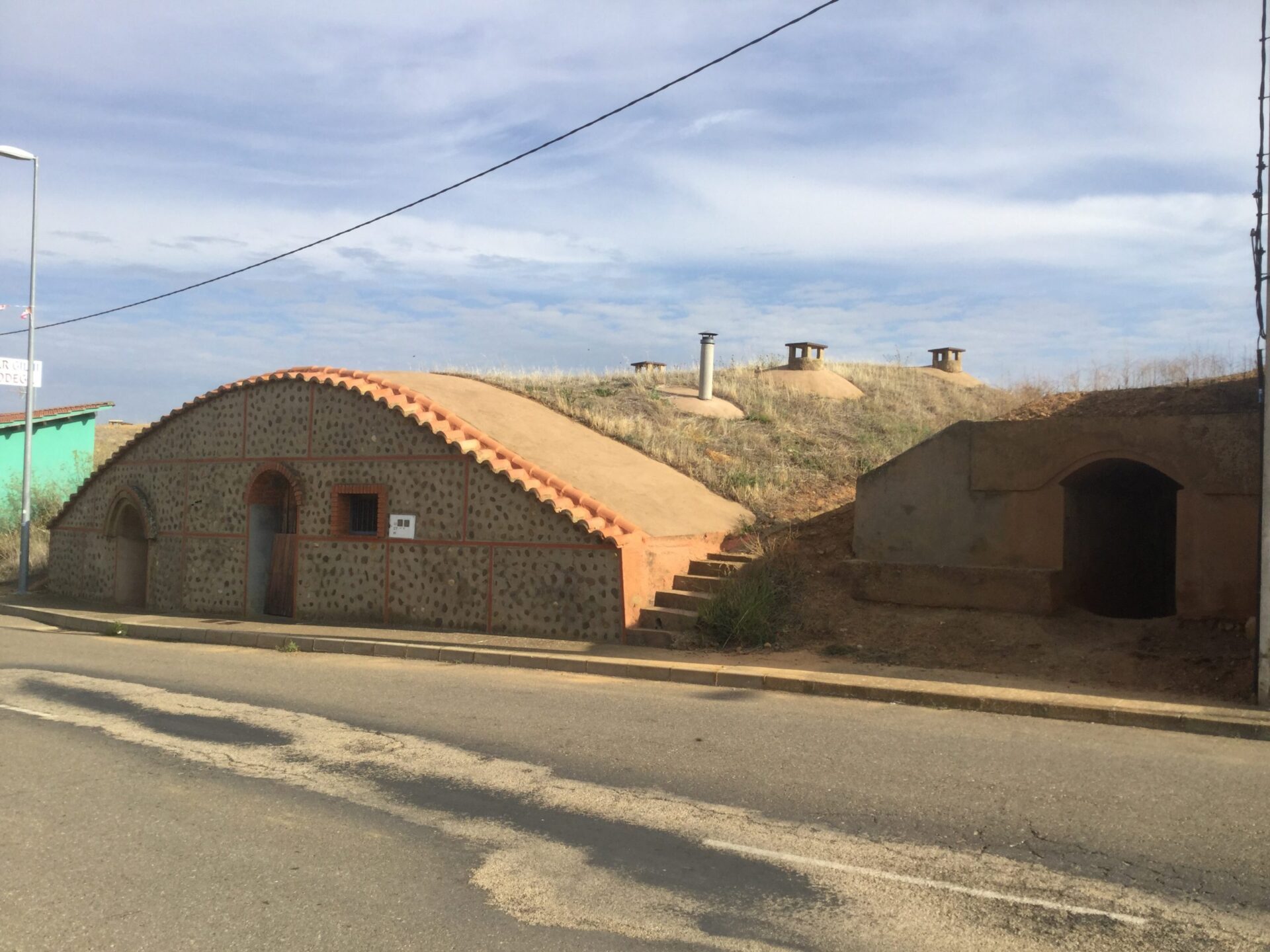
I like to photograph the old ruins of a town. The now deserted homes that have been walked away from as people move to the cities for work. But that doesn’t really represent the towns we walk through. Here is a beautiful street in Religious.
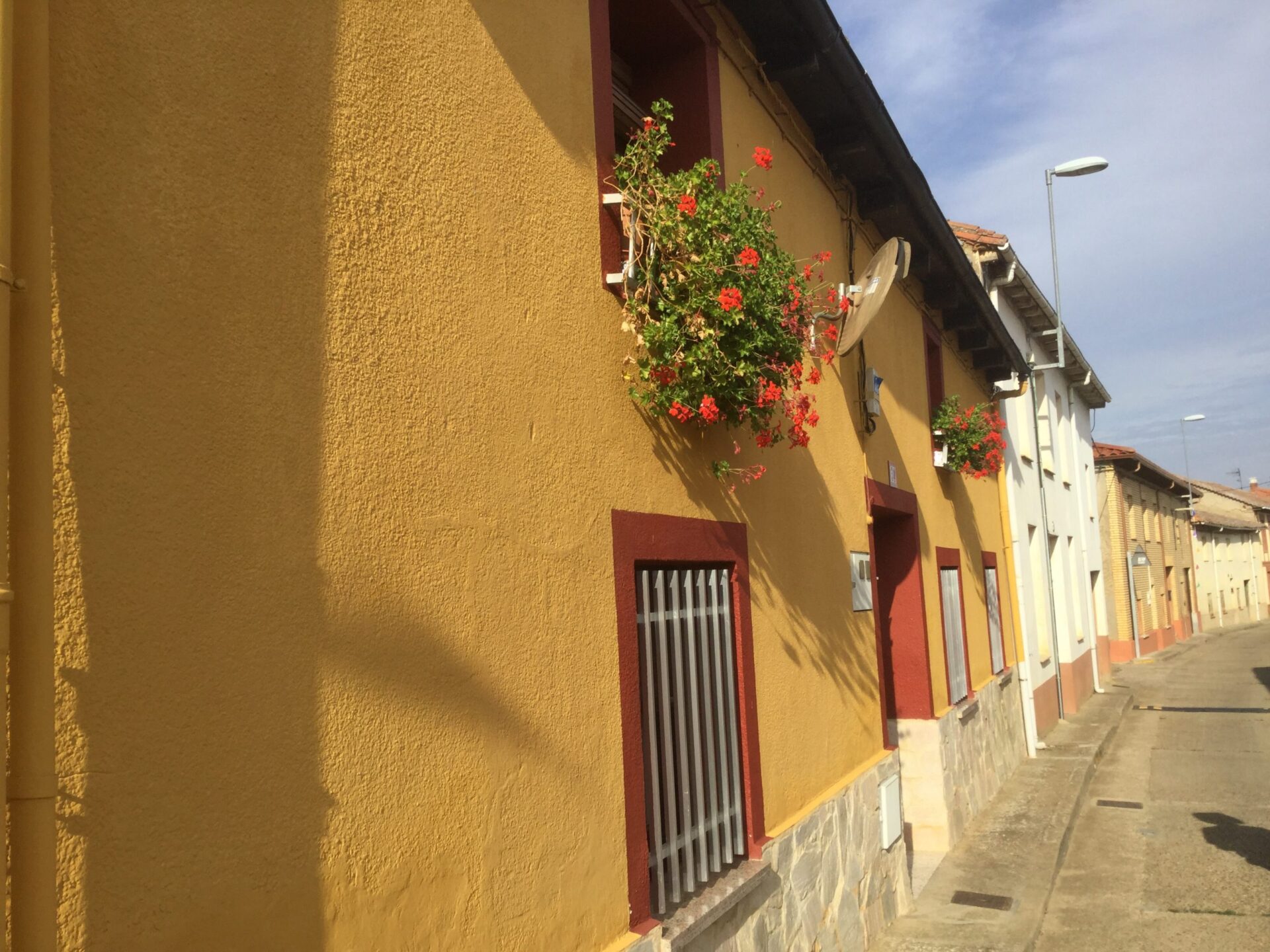
In Mansilla de Las Mulas we slowly wandered the streets. We were still undecided as to whether we would stay here for the night or continue on. It was late in the morning but still an early day. There was a local market selling local produce and we wandered through.

And then we saw the Roman walls. Dating from the 12th century these are one of the best preserved walls in the province of Leon. They survive from the time when Fernando II repopulated the town. Battlements, fortified towers and one of the four gates made of limestone and rock can still be seen.
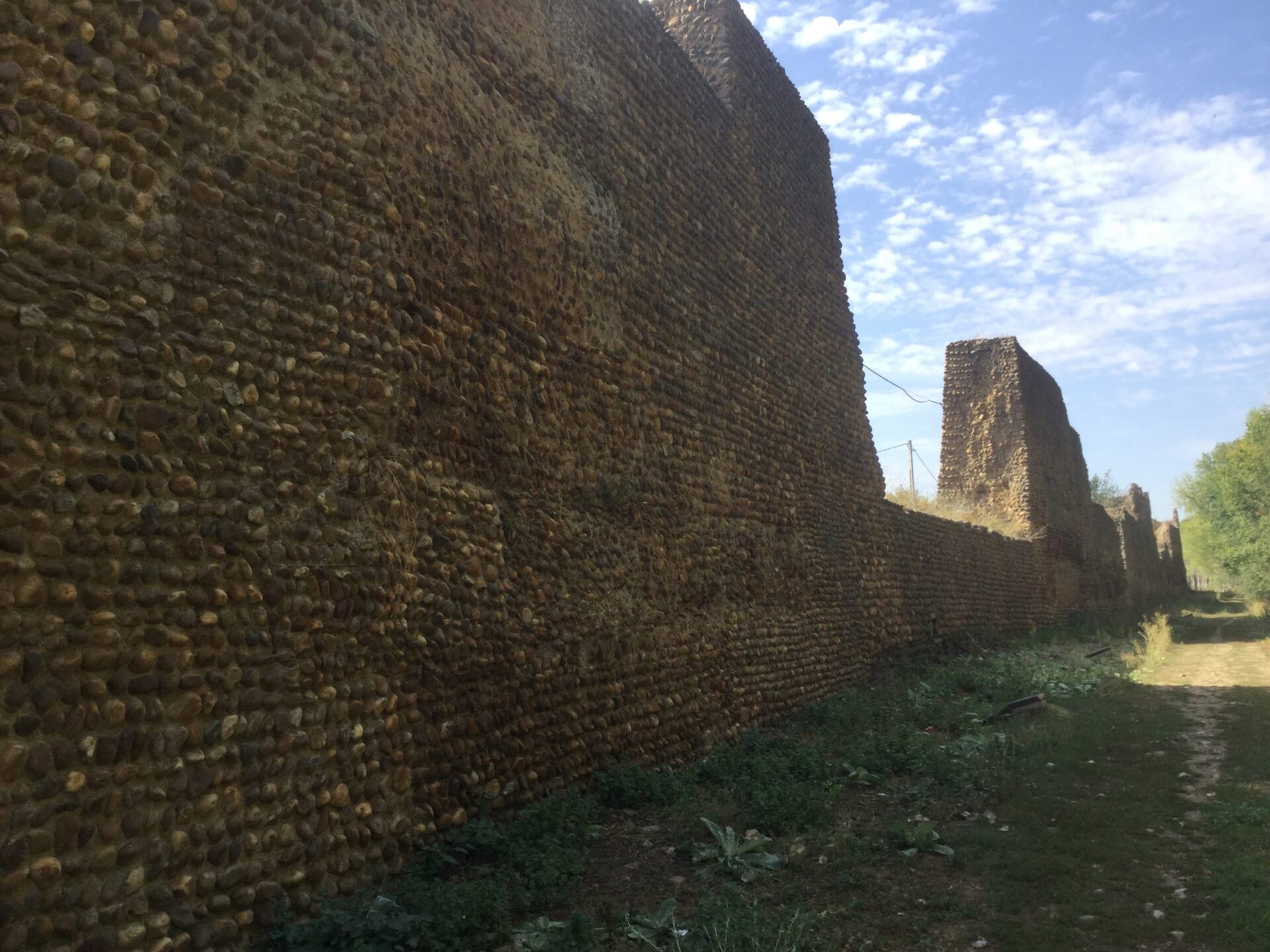
We eventuality decided to move on and crossed the Rio Esla for the 6 K walk to Villarente. We passed the ancient hill fortress where the indigenous Asturians met their demise at the hands of the Romans. Many artefacts from the Neolithic period have been recovered from this area.
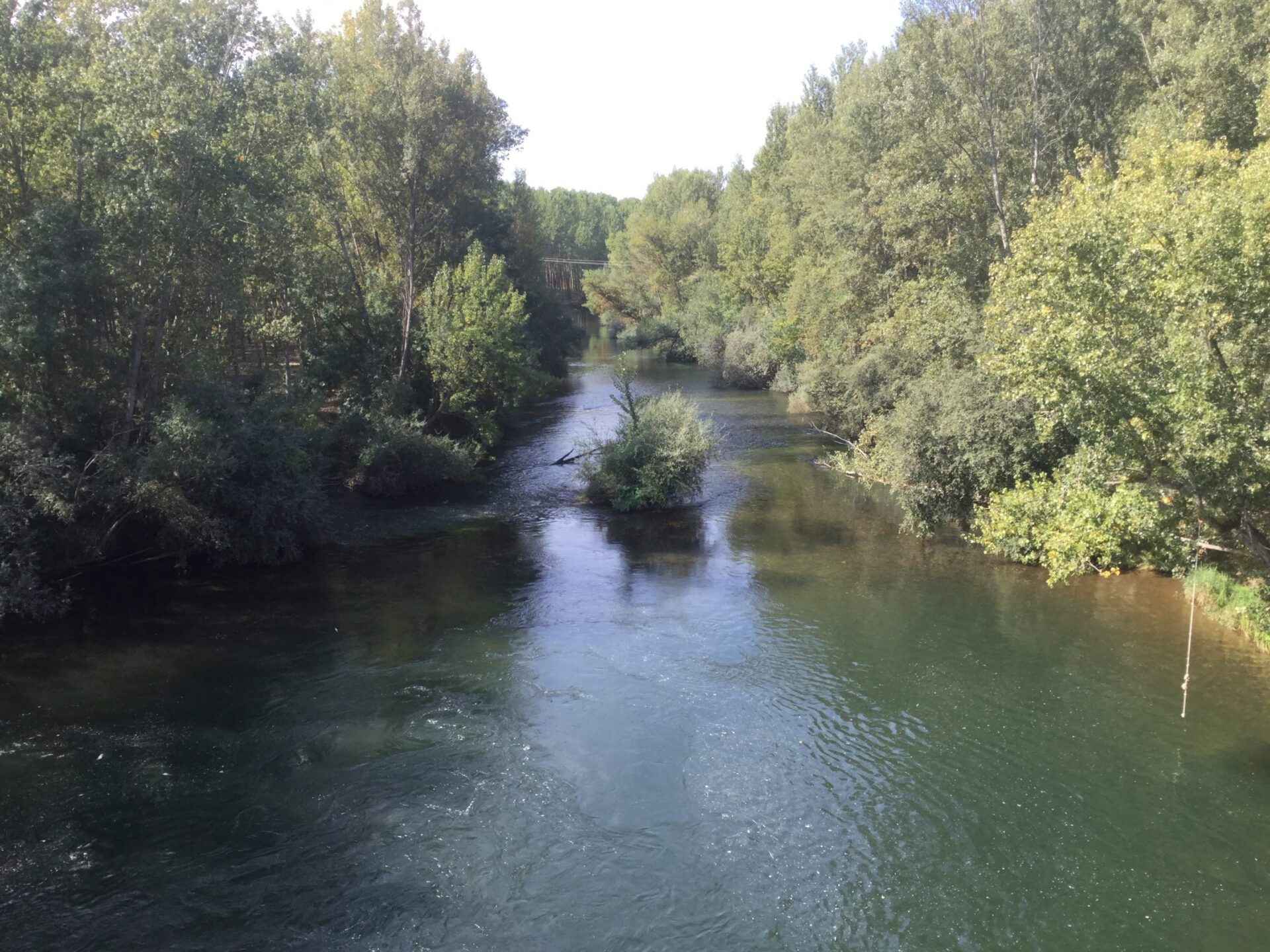
We pass on a special made pilgrim bridge along side the huge bridge Puente Ingente which has a span of 20 arches. This special made pilgrim bridge was built to keep pilgrims safe as it was dangerous to cross the Puente Ingente on foot. Before reaching Villarente a shaded rest area down by the river was once the site of a medieval pilgrim hospital which operated a donkey ambulance for sick pilgrims to León.
